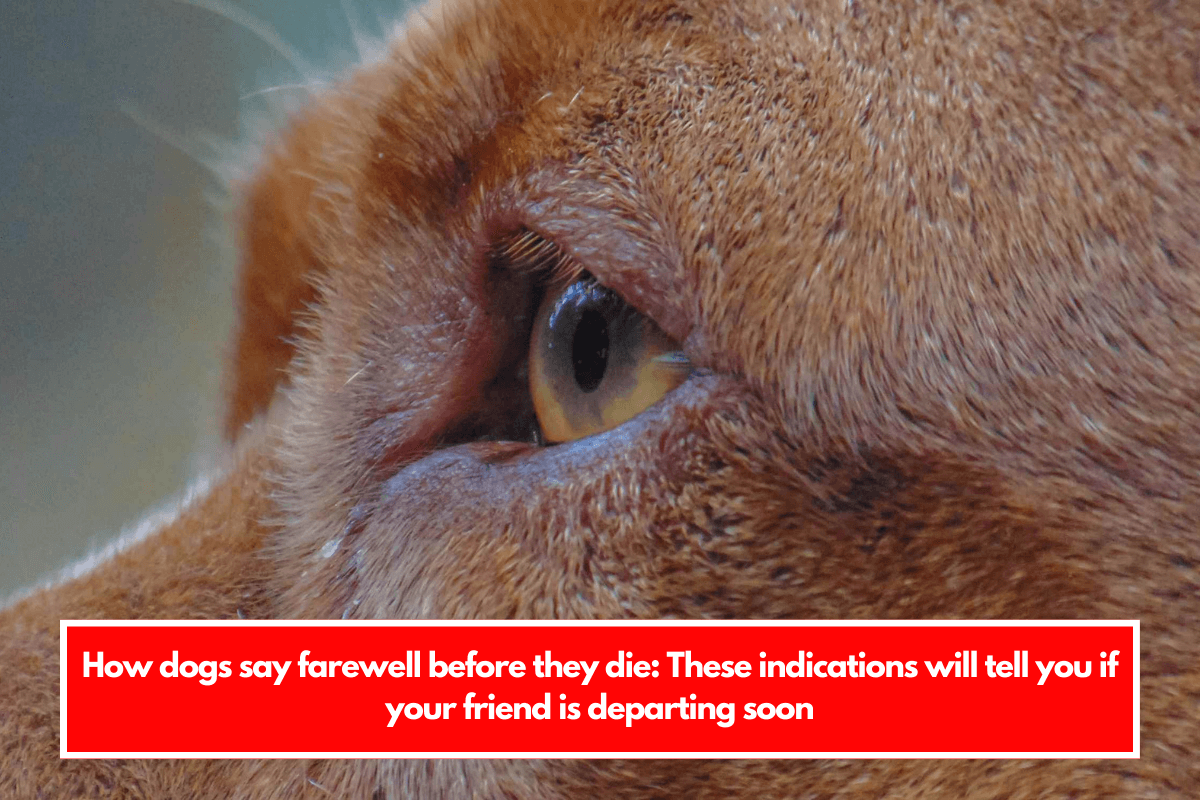Every life that involves a dog contains a heartbreak unlike any other. They enter in our world full of spirit, and then one day their time runs out.
Many folks are unsure what to look for or what to expect. There is bewilderment, sadness, and worry, and no amount of sympathy from friends and family can stop the emotions from flowing.
The death of a pet, particularly a dog, is a painful issue, but there are several indicators that might help us comprehend what is going on.
Losing interest in old routines
When dogs reach the end of their lives, they may lose interest in formerly appreciated activities.
A buddy who once yanked on the leash, ready to trot outside, may suddenly ignore the door, choose to relax rather than walk, or even deny a short stroll.
This shift may signal that the body is no longer operating normally.
Dr. Leslie Gillette, a veterinarian at the University of Florida, emphasized the significance of taking your dog to the vet on a regular basis if you detect any changes or dips in its health or routine.
Changes in appetite and habits
Some dogs may lose their appetites and refuse to drink water. Others may overeat for a brief period of time.
Incontinence occurs when pee or feces appear in unexpected areas. There may also be vomiting or diarrhea, which worsens their condition.
These strange actions could indicate that they are having difficulty controlling basic physiological functions. None of these changes are simple to see, but they may indicate that time is running out.
Vital signs worth noting
A dog’s body temperature, heartbeat, and breathing rate are all within normal norms. Something is wrong if these shift too far either way.
A dog’s body temperature normally ranges from 101° to 102.5° Fahrenheit. If numbers deviate from typical bounds, it could indicate the end is close.
It is beneficial to understand how to detect these indications. A spike or fall in temperature, hard breathing, or a weaker pulse are all signs of a health problem that should be handled quickly.
Facing severe exhaustion
One of the most difficult times is when a dog stops reacting to those who adore it. The pet that once raised its head to a pleasant voice may lie still for hours.
The paws that roamed the floor might stay limp all day. The eyes that followed a favored person can be scarcely open. They can fall into what appears to be deep exhaustion, losing the spark that previously lighted up a room.
There may be a sense that the dog’s spirit is slipping away. This extreme exhaustion is uncomfortable to observe, yet it reveals much about the body’s battle.
Quiet acceptance
Some dogs appear to discover a weird peace as their lives wind down and their daily routines fade into silence.
Your pet may no longer resist the dull agony in their bones, preferring not to wait by the window or respond to little noises, instead accepting soft touches without lifting their heads.
This quiet mood can be difficult to understand, yet it frequently occurs in the final days. It could be their method of easing into whatever comes next.
Offering comfort
When it becomes evident that a dog’s life is limited, many people feel helpless. There is no handbook outlining the ideal strategy.
Some people may prefer to keep a silent vigil by their dog’s side, hoping that the presence of a familiar face may alleviate their concerns. Others place a soft blanket near their pet or gently offer a favorite food, even if it is ignored.
Words may be muttered carefully to the dog, expressing how much it is loved. The emphasis moves from encouraging the dog to stay and play to just making it feel comfortable and cared for.
Though these deeds may appear insignificant, they carry enormous weight in that ultimate chapter.
Remembering their place in our lives
People frequently describe their dogs as family. In the end, a dog’s companionship is defined by years of shared experiences. They have remained loyal throughout laughter and sorrow.
Their departure from this world does not erase the times they greeted us at the door, made us smile when the days were dark, or cuddled close when we felt lonely. Those memories are vivid, imprinted into our hearts, and form a lasting link.
A meaningful farewell
When a dog dies, the sadness might linger, but recognizing the signals can help us provide the kindness and loving care they deserve. Recognizing that a loss is impending creates space for behaviors that express affection.
Some may stay awake all night, petting velvety fur. Others could speak quietly, reminiscing ancient stories and the bark that once filled the house.
Although grieving is unique to each individual, one common thread is a desire to repay the dog for the love it provided throughout its life.
The pain will not go away overnight, but there is consolation in knowing that in those final days, understanding and compassion impacted the road forward.
SOURCE









